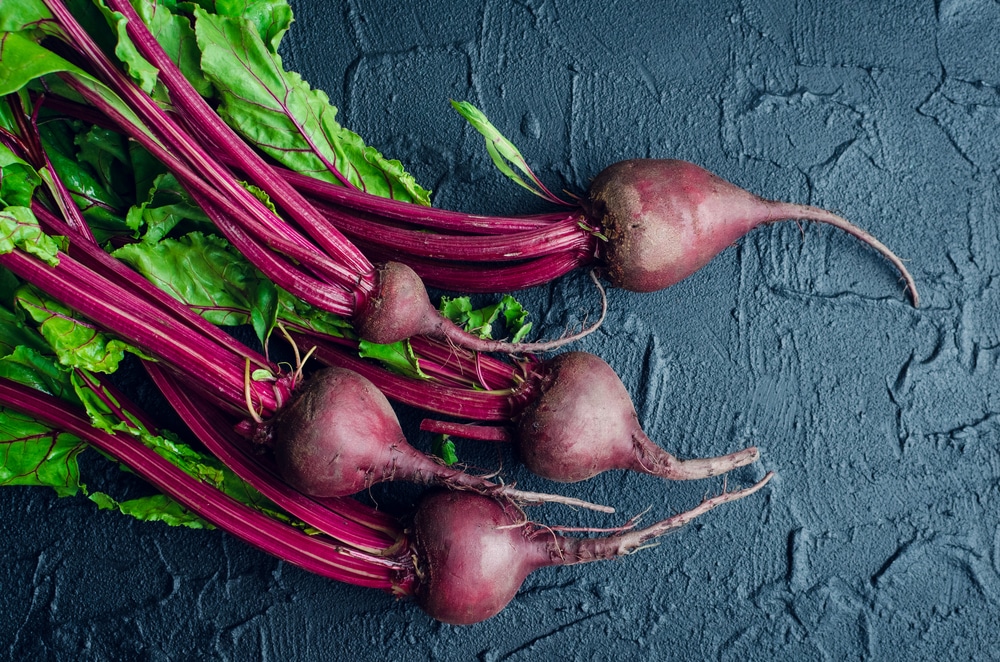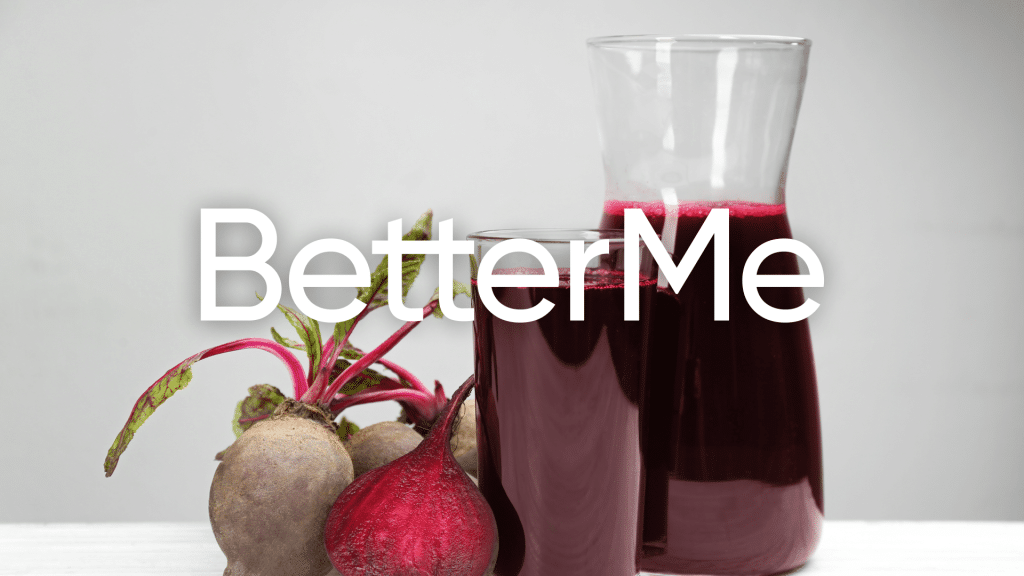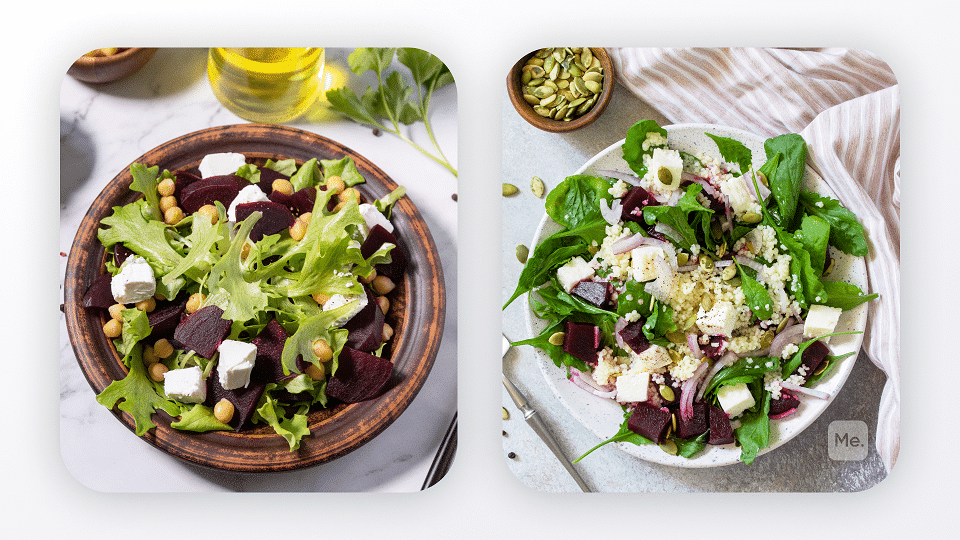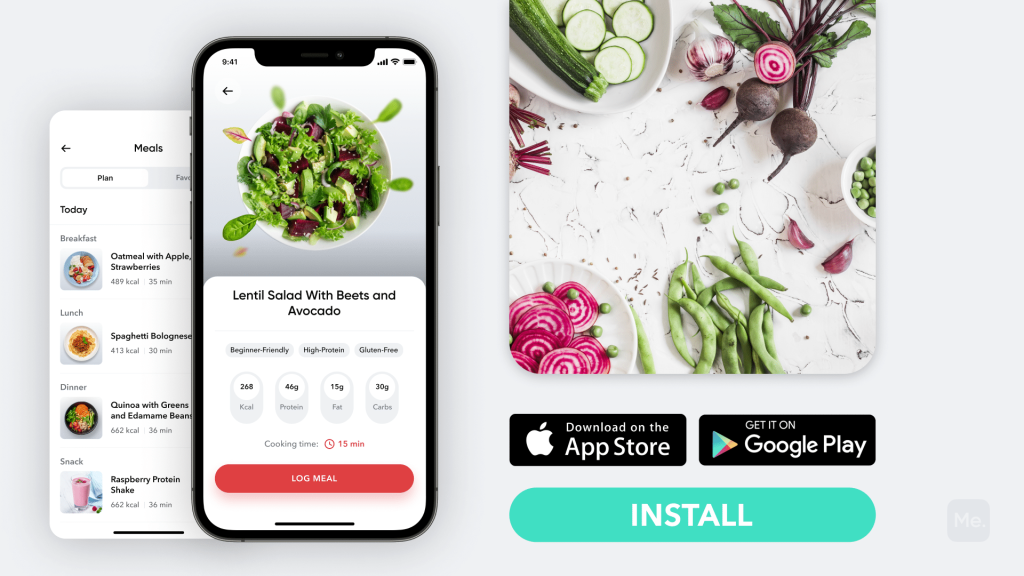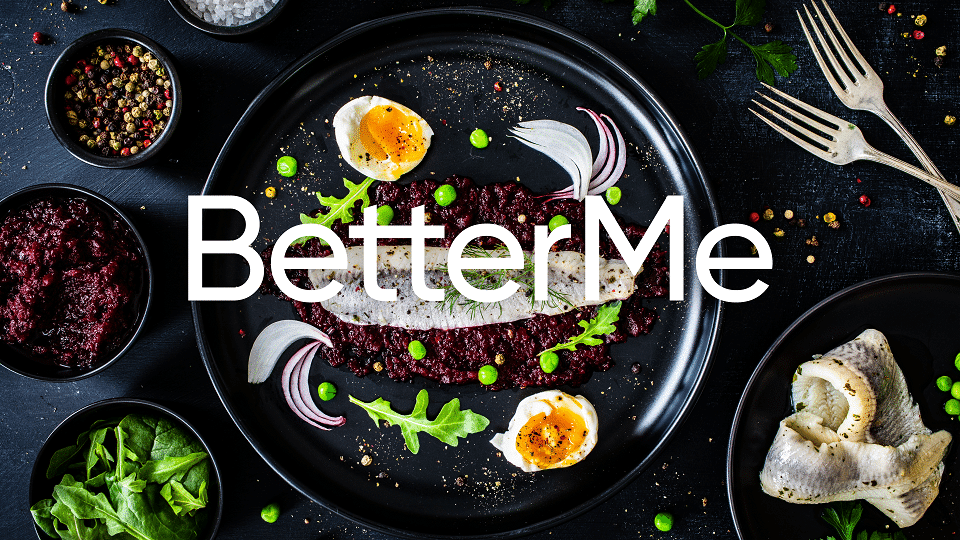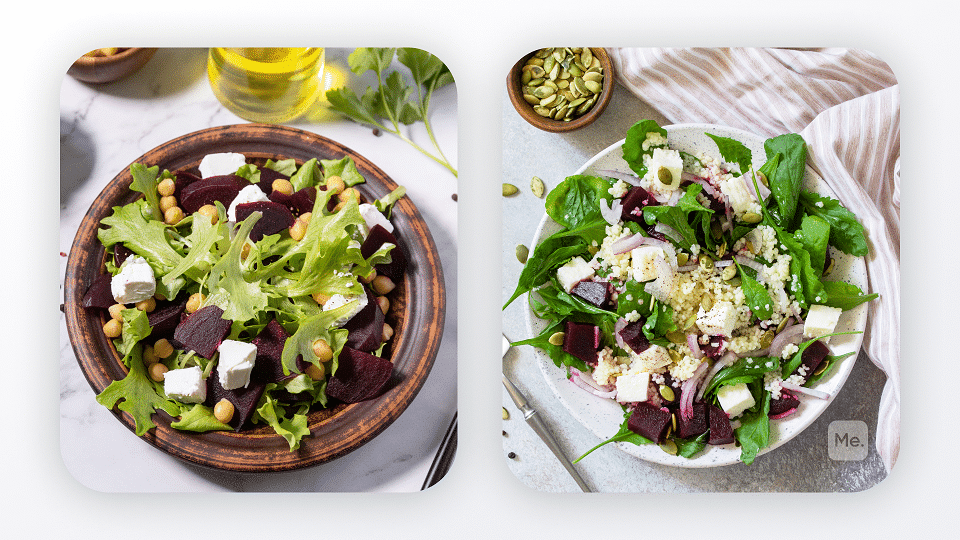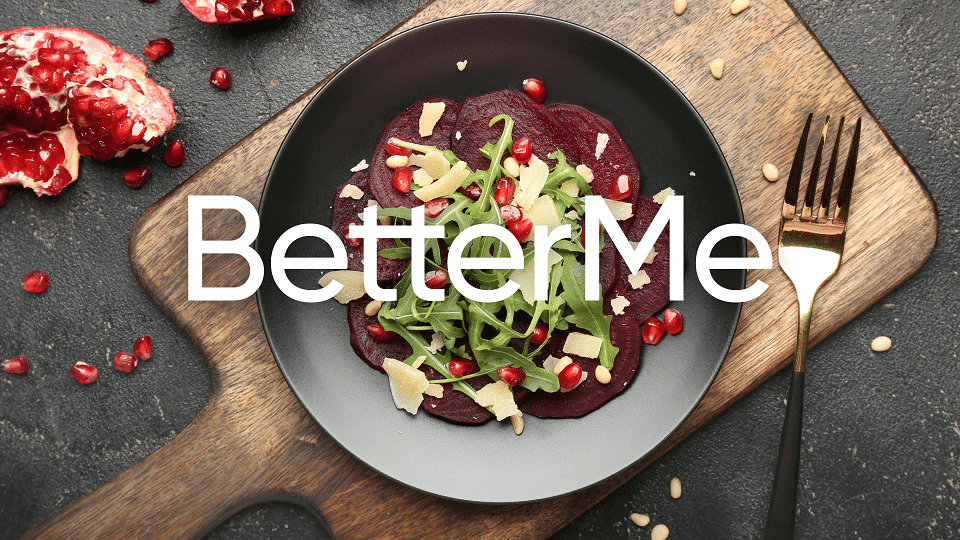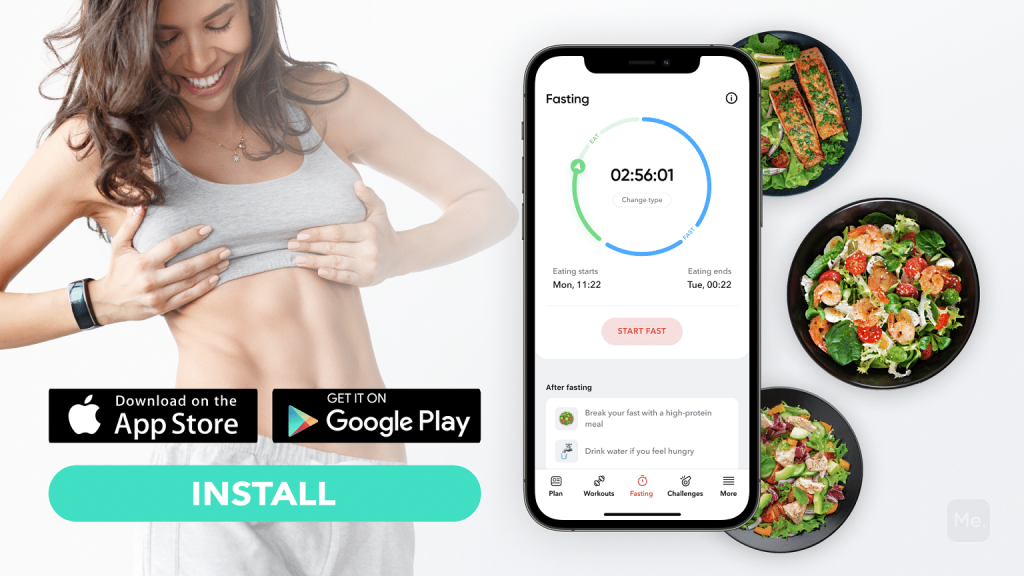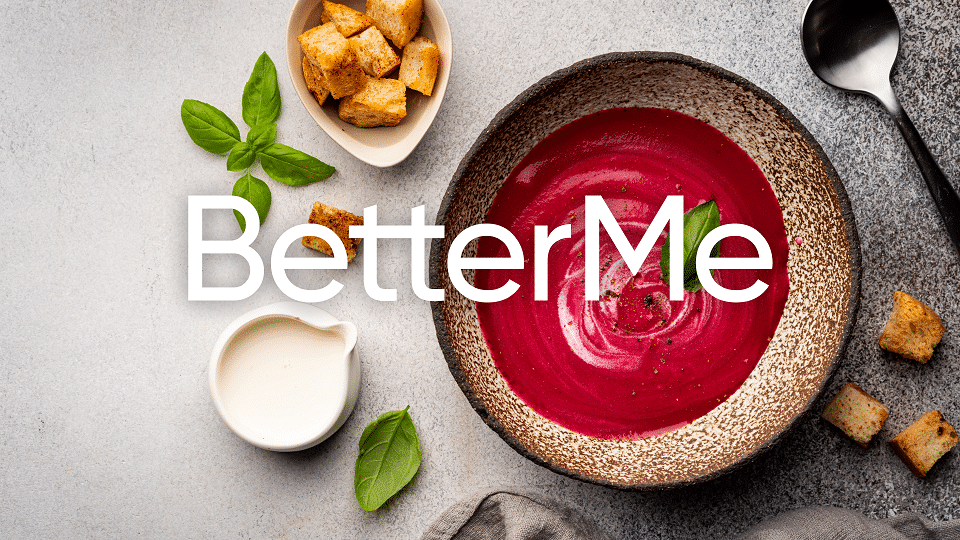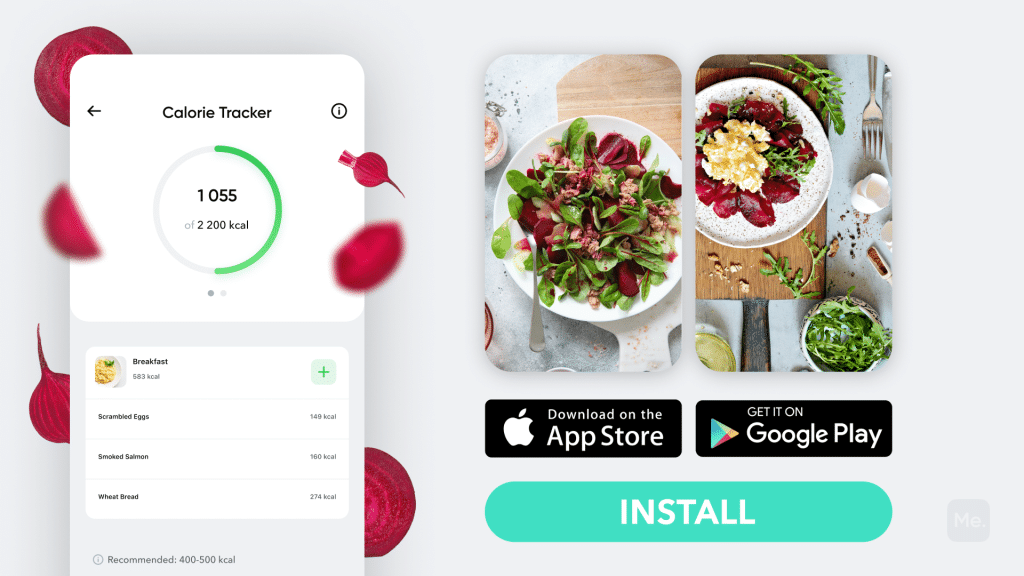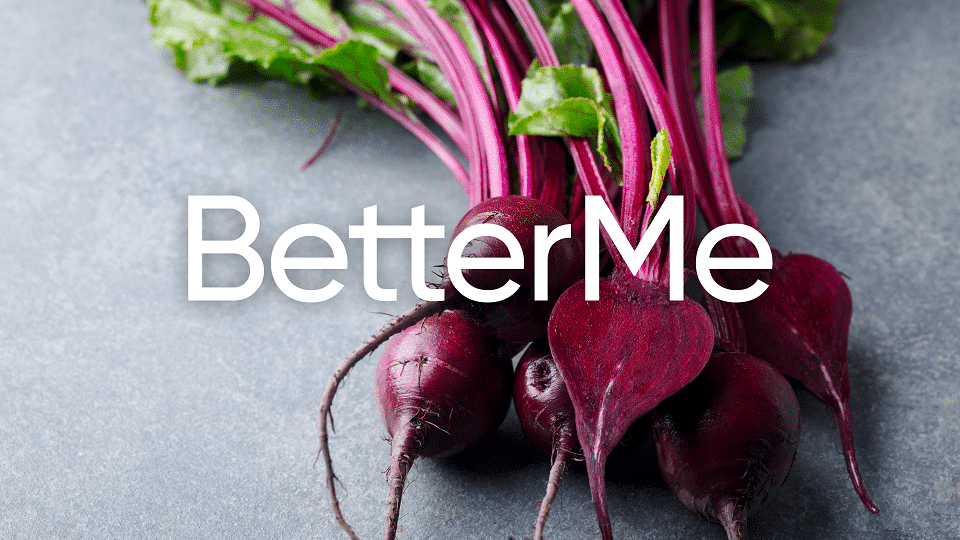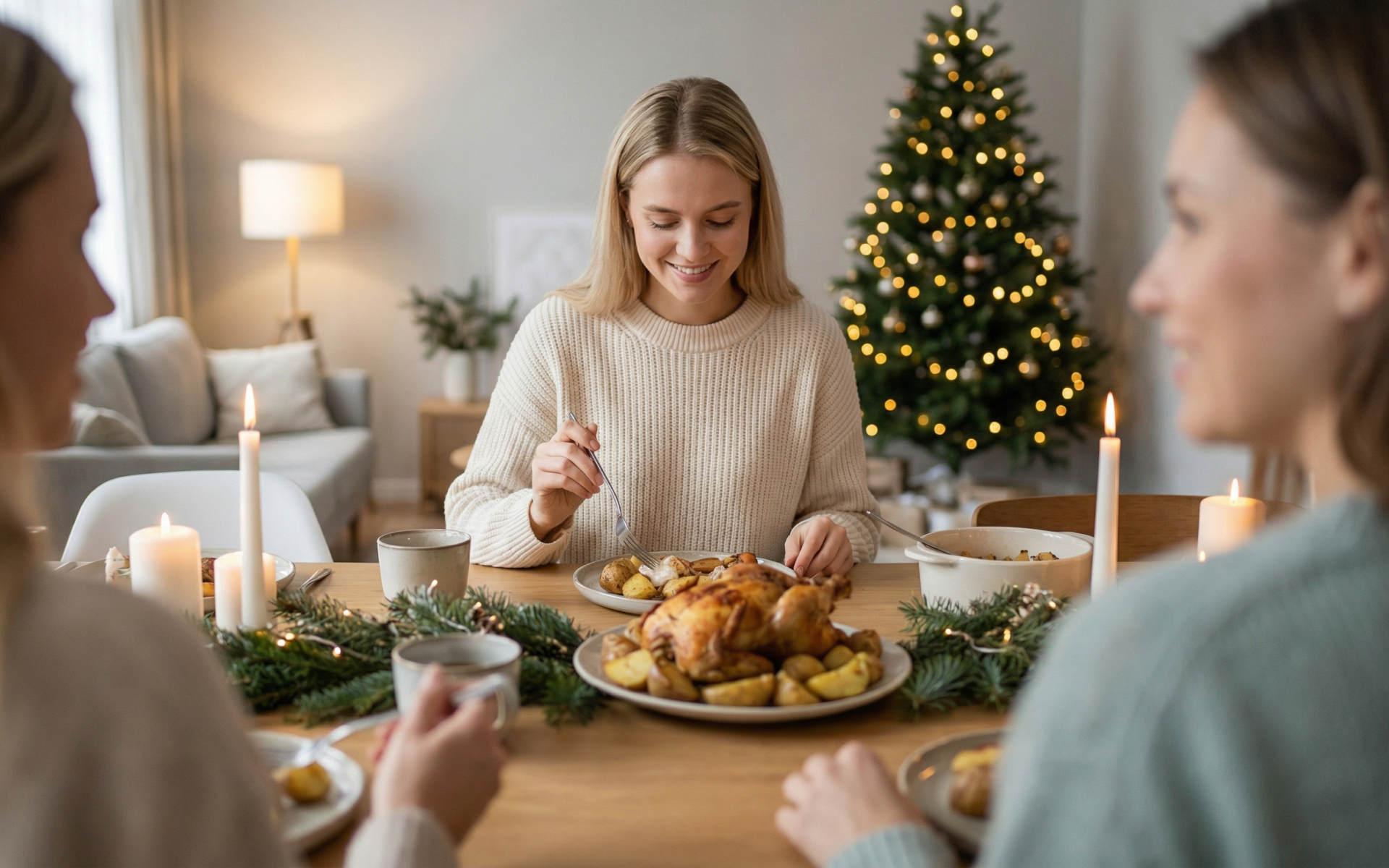Beetroots are one of the most popular winter vegetables throughout the world. They are popular for their sweet, earthy flavors—especially when roasted with other root vegetables or served as a wonderful table garnish to any dish. However, some people don’t realize that beetroots are only one part of this amazing vegetable! The leaves of the plants can be eaten just like spinach and other greens, and therefore should not be overlooked! While it may seem like a big hassle to harvest the leaves and prepare them for cooking, they are well worth the effort. They have a wonderful earthy flavor that is quite delicious in salads or cooked dishes. Plus, they are very nutritious. In this article, we will take a look at what beet leaves can do for you and why everyone should be eating them.
Beet Greens Nutrition Facts
1 cup of raw beet greens (38 grams) contains the following nutrients (3):
- Calories: 8.4kcal
- Carbohydrates: 1.7 grams
- Protein: 0.8 grams
- Fat: 0 grams
- Calcium: 44mg or 3% of the DV
- Iron: 1mg or 6% of the DV
- Magnesium: 7% of the DV
- Manganese: 6% of the DV
- Potassium: 6% of the DV
- Phosphorus: 2% of the DV
- Selenium: 1% of the DV
- Zinc: 1% of the DV
- Vitamin A: 13% of the DV
- Vitamin B1: 3% of the DV
- Vitamin B2: 6% of the DV
- Vitamin B3: 1% of the DV
- Vitamin B5: 2% of the DV
- Vitamin B6: 3% of the DV
- Folate: 1% of the DV
- Vitamin E: 3% of the DV
- Vitamin K: 127% of the DV
Health Benefits Of Beets And Beet Greens
There are many reasons why you should eat beet greens. Here are the most important ones:
Immunity Support
Beets and beet greens are rich in antioxidants and vitamin C, which supports your immune system and helps it to fight off viruses (17). Beet greens are especially high in Vitamin K, which is known to help protect the body from chronic diseases (18).
Low Calorie
Beet roots and beet greens both contain very few calories (less than 15 per cup), which makes them great food choices for any diet. Beetroots are high fiber foods, which means they take longer to digest and will not cause an energy spike after you eat them. They help you feel full for a longer period of time (10).
Healthy Pregnancy
The high levels of folate in beets may contribute to a reduced risk of pregnancy complications like neural tube defects in babies (8). Eating beet greens not only gives you more folate, but it also provides a source of iron—another nutrient that is essential to the health of pregnant women.
Read More: Microgreens Benefits, Nutrition, Side Effects, And How To Grow Them
Prevention Of Diseases
Beetroots are especially high in cancer-fighting antioxidants called betalains, which help fight inflammation and oxidative damage in the body—both of which are linked to the development of heart disease and cancer (5). Beet greens contain similar nutrients and may help protect you from diseases like Alzheimer’s and arthritis.
Improved Digestion
Because beetroots are high in fiber, they help you stay regular. This can be especially helpful for those who suffer from inflammatory bowel diseases like Crohn’s disease or ulcerative colitis. They help move food through the digestive tract more quickly and prevent constipation (10).
Bone And Teeth Health
Beetroots and beet greens contain calcium, which is essential for the development of strong bones and teeth (12). They are also rich in vitamin K, which plays a role in bone mineralization.
Eye And Skin Health
Beetroots and beet greens contain high levels of antioxidants called betalains, which help protect the body from free radicals that cause eye and skin damage (5). Beetroots are high in dietary nitrates which may help improve blood flow to the eyes and support night vision. They might also help prevent degeneration of the retina—a common condition in older people that can lead to blindness (2).
Improved Energy
Beetroots are a good source of iron, which helps deliver oxygen to body tissues (13). They also contain several B vitamins, which help the body produce energy from the food we eat.
Weight Loss
Along with portion control and exercise, eating a diet high in low-calorie foods like beets can help you lose weight and keep it off. Studies have shown that eating fiber-rich food like beetroots and beet greens helps reduce appetite, leading to lower calorie intake overall (6).
Improved Mood And Brain Health
Beet greens are high in folate, which is essential for brain function and can help prevent depression (7).
They are also rich in vitamin K, which may help protect the brain from damage caused by oxidative stress (11).
If you wish to cinch your waist, tone up your bat wings, blast away the muffin top – our fitness app was created to cater to all your needs! BetterMe won’t give excess weight a chance!
Side Effects Of Beet Greens
Although beet greens are beneficial to your health in many ways, they also contain toxins that can cause negative side effects.
High Nitrate Content
Beet greens are very high in dietary nitrates, which can cause harmful health effects when consumed at excessive levels. High amounts of nitrate have been associated with a higher risk of certain types of cancer (16). On the other hand, dietary nitrates may also have health benefits, especially for the cardiovascular system. If you consume beet greens in moderation as part of an overall balanced and varied diet, you shouldn’t have anything to worry about.
Possible Allergic Reaction
People who have a known allergy to beets or celery should avoid eating beet greens because it contains a chemical very similar to the one in these foods that can cause reactions (1).
High Vitamin K Content
Beetroots and beet greens are high in vitamin K, which helps regulate blood clotting. However, consuming a lot of it can interfere with the effects or reduce the effectiveness of medication for those who take anticoagulants (20). If you are taking blood thinners, talk to your doctor about how much beet greens it is safe for you to eat.
What You Need To Know
Before you consume beet leaves or any other part of this plant, it is important that you wash them thoroughly.
When preparing beet greens for cooking, it is essential that you clean them thoroughly because they are grown on plants that have been sprayed with pesticides and other chemicals to keep bugs away. Beet leaves are very delicate, so washing them with water is usually enough to get rid of any toxins or dirt.
Read More: Collard Greens Calories, Benefits, And Side Effects
What You Can Do With Beet Greens
You can cook beet greens in a variety of ways, including:
Steaming
If you’re looking out for heat-sensitive nutrients such as vitamin C or folate, steaming is the best way to prepare beet greens because it does not result in any nutrient loss. Beet roots are also great to steam, but you will want to use smaller pieces so they cook faster.
Sauces
Since beet greens are very thin and delicate, you can use them as a cooked green to make different sauces.
Breakfast Dishes
You can add chopped beet greens to your omelet or quiche for extra flavor and nutrients. You can also mix it into scrambled eggs alongside other veggies like onion, celery, garlic and carrots.
Salads
You can chop beet greens and add them to your salads or sandwich wraps for a refreshing kick of flavor that you will not find in other salad ingredients.
Soups
Beet leaves are great when used as flavorsome garnish in soups like minestrone, lentil curry and chicken noodle soup.
In Stir Frys
Use beet greens as a replacement for cabbage or other leafy vegetables in stir-fry dishes.
They go well with most other vegetables and herbs, so you can experiment by adding beet greens to recipes for cabbage, kale and broccoli.
You can also chop them up and add them to fried rice dishes after they have been cooked. If you’re going to use them in a stir fry, make sure that you cut the leaves into small pieces first—otherwise they will not cook evenly with other vegetables.
In Smoothies
To get all the nutrients that beet greens have to offer, you can throw a handful into your fruit and veggie smoothies.
BetterMe is your fast-track ticket to a long-lasting weight loss! Tailor your fitness journey and maximize your results with just a couple of swipes!
Beet Greens Recipes
The best thing about beet greens is that you can use them in place of other dark leafy vegetables when cooking, so you are bound to find many recipes that are perfect for adding this ingredient.
Beet Greens Dal Recipe (4)
If you are an Indian cuisine lover, you should definitely try this dal recipe. You can eat beet greens dal with steamed brown rice.
Ingredients:
- ½ cup yellow moong dal (split and skinless)
- 1 ½ + 1 cups water
- 2 cups beetroot leaves and stems chopped, from 2 beets
- 1 tablespoon olive oil
- 1 teaspoon cumin seeds
- 1 teaspoon ginger paste or freshly grated or crushed
- 2 green chilies chopped finely
- ¼ teaspoon turmeric powder
- ½ teaspoon coriander powder
- ½ teaspoon red chili powder
- ½ teaspoon garam masala
- Some salt to taste
- 1 ½ teaspoon lemon juice
Directions:
- Heat the olive oil in a pressure cooker over medium heat.
- Once the oil is hot, add the cumin seeds and let them sizzle. Stir in the ginger paste and green chillies. Cook for 30 seconds.
- Then add the beet greens and stems. Sautée for about 3 minutes.
- Add the washed moong dal and mix. Add the spice powders and the salt and mix well.
- Now, add 1 ½ cups of water and mix. Cover the pressure cooker and put the weight on. Let the mixture cook over medium heat for about 3 to 4 whistles. Turn off your stove.
- Let the pressure go down, then open and remove the lid.
- Add 1 more cup of water and turn the heat to medium.
- Let it come to a boil and simmer for about 2 to 3 minutes. Add then lemon juice and mix then serve.
Servings: 2 to 3
Nutritional info: 138 calories, 14g carbs, 5.7g protein, 7.4g fat, 4.1g fiber, 770mg sodium
Golden Beet Pasta With Basil-Almond Pesto (9)
This is a delicious way to get more healthy meals into your meal plan. Remember to thoroughly wash the beet greens and stems.
Ingredients:
- 8 ounces uncooked whole-wheat penne (tube-shaped pasta)
- 2 (8-ounce) golden beets with greens
- 2 tablespoons extra-virgin olive oil, divided
- ¾ cup water, divided
- ⅓ cup organic vegetable broth
- ½ teaspoon kosher salt
- ½ teaspoon freshly ground black pepper
- 2 cups loosely packed fresh basil leaves
- ¼ cup dry-roasted unsalted almonds
- 3 garlic cloves, chopped
- 2 ounces fresh Parmigiano-Reggiano cheese, grated (about 1/2 cup)
- 1 tablespoon fresh lemon juice
Directions:
- Cook the pasta according to the cooking instructions on the package and drain. Don’t include salt and oil.
- Remove the stems and greens from the beetroots, rinse thoroughly then drain. Chop the beet greens and stems and fill 4 cups.
- Peel the beets, cut in halves longitudinally and cut into ⅛-inch slices.
- Heat a cooking pan over medium to high heat. Add a tablespoon of olive oil and swirl to coat. Stir in the beets and sautée for 3 minutes.
- Add the beet greens, stems, salt, pepper and broth then cover.
- Turn the heat to medium and simmer for about 8 minutes or until the beets become tender.
- Combine the remaining tablespoon of olive oil, garlic, basil and almonds in a food processor. Blitz until smooth. Add the cheese and ¼ cup of water, process until blended.
- Add pasta, pesto, and lemon juice to the beat mixture. Toss to combine then serve.
Servings: 4
Nutritional info: 419 calories, 55.7g carbs, 15.7g protein, 16g fat, 10g fiber, 596mg sodium
Sautéed Beet Greens (15)
This simple beet green recipe takes only 20 minutes to prepare. You can therefore prepare it when you have a long list of things to get done or don’t want to spend too much time in the kitchen.
Ingredients:
- 2 tablespoons olive oil
- ½ onion, chopped
- 2 tablespoons minced garlic
- 1 pound beet greens – stems discarded and leaves shredded
- 1 ¼ teaspoons capers
- 1 tablespoon chopped oil-packed sun-dried tomatoes
- Sea salt and cracked black pepper to taste
Directions:
- Heat the olive oil in a cooking pan over medium heat.
- Add the onions into the hot oil then stir for about 3 to 5 minutes until they are translucent. Stir in the minced garlic and cook for another 1 minute.
- Add in the beet greens to the onion mixture and stir. Cook for about 3 to 5 minutes until the greens wilt.
- Add the tomatoes and capers, cook for 1 minute as you stir.
- Remove from the heat and season with salt and pepper then serve.
Servings: 4
Nutritional info: 107 calories, 9.6g carbs, 3.2g protein, 7.2g fat, 5g fiber 369.5mg sodium
Conclusion
Beet roots are extremely beneficial nutritious vegetables that are rich in fiber, antioxidants, iron, calcium, folate, vitamin K and more. Their high levels of nutrients make them an excellent source of nutrients for your health without packing too many calories. Like most foods, they may have side effects when consumed in excess. It’s best to eat them in moderation as part of a balanced diet.
DISCLAIMER:
This article is intended for general informational purposes only and does not serve to address individual circumstances. It is not a substitute for professional advice or help and should not be relied on for making any kind of decision-making. Any action taken as a direct or indirect result of the information in this article is entirely at your own risk and is your sole responsibility.
BetterMe, its content staff, and its medical advisors accept no responsibility for inaccuracies, errors, misstatements, inconsistencies, or omissions and specifically disclaim any liability, loss or risk, personal, professional or otherwise, which may be incurred as a consequence, directly or indirectly, of the use and/or application of any content.
You should always seek the advice of your physician or other qualified health provider with any questions you may have regarding a medical condition or your specific situation. Never disregard professional medical advice or delay seeking it because of BetterMe content. If you suspect or think you may have a medical emergency, call your doctor.
SOURCES:
- Anaphylaxis to beetroot (Beta vulgaris): a case report (2011, biomedcentral.com)
- Association of dietary nitrate intake with primary open-angle glaucoma: a prospective analysis from the Nurses’ Health Study and Health Professionals Follow-up Study (2017, ncbi.nlm.nih.gov)
- Beet greens, raw (2019, fdc.nal.usda.gov)
- Beet Greens Dal Recipe (2013, spiceupthecurry.com)
- Beetroot as a functional food with huge health benefits: Antioxidant, antitumor, physical function, and chronic metabolomics activity (2021, onlinelibrary.wiley.com)
- Dietary Fiber and Weight Regulation (2001, academic.oup.com)
- Folic acid, ageing, depression, and dementia (2015, ncbi.nlm.nih.gov)
- Folic Acid Supplementation and Pregnancy: More Than Just Neural Tube Defect Prevention (2011, ncbi.nlm.nih.gov)
- Golden Beet Pasta with Basil-Almond Pesto (2013, myrecipes.com)
- Health benefits of dietary fiber (2009, academic.oup.com)
- Novel Role of Vitamin K in Preventing Oxidative Injury to Developing Oligodendrocytes and Neurons (2003, ncbi.nlm.nih.gov)
- Overview of Calcium (2011, ncbi.nlm.nih.gov)
- Review on iron and its importance for human health (2014, ncbi.nlm.nih.gov)
- Role of betaine in improving the antidepressant effect of S-adenosyl-methionine in patients with mild-to-moderate depression (2015, ncbi.nlm.nih.gov)
- Sauteed Beet Greens (n.d., allrecipes.com)
- Study of nitrate levels in fruits and vegetables to assess the potential health risks in Bangladesh (2021, nature.com)
- Vitamin C and Immune Function (2017, (ncbi.nlm.nih.gov)
- Vitamin K as a Diet Supplement with Impact in Human Health: Current Evidence in Age-Related Diseases (2020, mdpi.com)
- Vitamins and Type 2 Diabetes Mellitus (2015, ncbi.nlm.nih.gov)
- Warfarin and Vitamin K (2020, uofmhealth.org)
